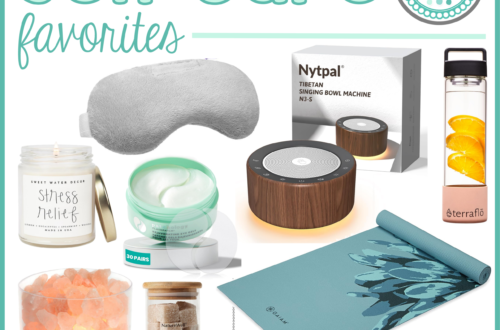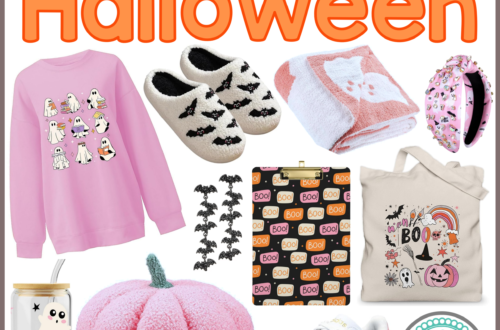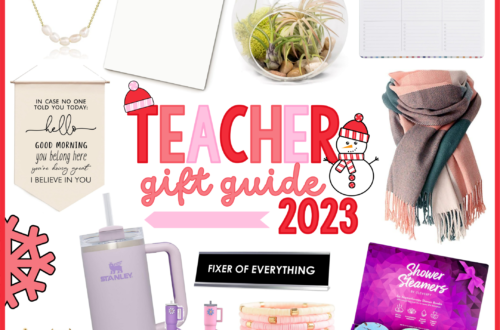Social Emotional skills are a huge part of preschool. Skills like respecting others’ opinions, taking turns, and managing emotions are the foundational skills that children need in order to be successful. These also tend to be the kind of lessons that present themselves in the preschool classroom over and over again, but when asked to put them on a lesson plan, it can be difficult to come up with a planned experience that it actually valuable for your particular group of children.
Over the years I’ve created a number of social emotional activities for my students simply because I couldn’t find anything else out there. When I started sharing activities on this blog the social emotional ones quickly became the most popular, which make me think that many of you also have a hard time finding fun, new social emotional ideas for the classroom. I wanted to share all of my favorites in one post so that they would be a little easier to find. This is a pretty long list so If you don’t have time to look through all of the activities now make sure to bookmark or pin this page so that you can come back to it in the future!

Emotion Vocabulary Cards and Spelling Practice: Help your students learn about feelings and emotions with these vocabulary cards. These cards encourage students to practice using more complex emotion words, including Embarrassed, Excited, Frustrated, Pleased, Sick, Surprised, Tired, Worried, and Jealous. This set also includes a set of cards that has pictures and spaces for children to practice spelling the vocabulary words with letter tiles. You could also use the second set to have each child write in the words themselves to create their own vocabulary card set.
Emotion Memory Game: This game is a great way for children to practice the recognition of emotions. The images and vocabulary included in this set go beyond basic emotions to teach children increasingly complex emotions, building their repertoire as they age.
Emotion Practice Set – Recognition and Expression: This pack includes three different sets of cards which are all designed to help children recognize emotions, become aware of how they express those emotions, and then practice the associated facial expressions.
The purple cards
These cards are intended to help children recognize the emotions that they feel. Read them the scenarios and see what answers they can come up with, there are no right or wrong answers to these questions. Some of these scenarios may require new emotion vocabulary that the children do not yet possess. This is the perfect opportunity to introduce new vocabulary and define these emotions and give examples of different reasons that children might feel these.
The orange cards
This set of cards is designed to help children recognize the ways that emotions are expressed. The answers that children give to these questions may be physical responses, such as crying, smiling, or hearing their stomach grumbling, or they may be other feelings and thoughts that combine to create entirely new emotions. Some of the children’s responses to these questions may also lead to additional discussion about appropriate ways of expressing emotions.
The green cards
These cards are meant to be used with a mirror. Ask the children to make the face that they would make when they are feeling each of these emotions, and after they have made these faces, describe each of them, and talk about why those particular expressions convey those specific emotions.
Emotion Practice – Sorting: Help children practice empathy and recognizing others’ emotions using this pack. Each mat includes three different emotions, and a number of suggestions for how a child could help a friend who is feeling these specific emotions. Student have to match the suggestion to the most appropriate emotion.
Emotions – Can you make this face?: These cards are intended to be used with a mirror to help children practice facial expressions which express emotion. Which children are aware their emotions, and understand how to express them, they are better able to communicate their feelings and what they need from others.
Emotions and Feelings Bunting: This bunting is a great way to remind students of emotions, even when you are working on other concepts. It includes 9 different emotions for children to practice recognizing and expressing. Hang the full color version in the classroom for a daily visual of emotions and feelings. The black and white version can be colored in by your students, making it a great group project that everyone can take part in. I have also included blank templates, in both the color and black and white versions so that your class can add additional emotions and feelings as you learn about them.

Thumbs Up – Social Emotional Skills Game: The question cards included in this game ask children to decide whether the action is a “thumbs up” or a “thumbs down” decision. Each question card has a picture for thumbs up and for thumbs down, so that children can use a clothespin to clip the correct answer and do the activity independently. This game can also be played with a small group, where the teacher reads the question cards and the children use their thumbs to show whether they think it is a “thumbs up” or a “thumbs down” decision. This pack also includes multicultural thumbs up and thumbs down cards, which can be attached to a popsicle stick to create paddles that the teacher or the students use to show their opinions. The pieces of this game can be used a number of different ways to help children learn to regulate their own behaviors.

Emotions and Feelings Synonyms: Use these synonym paint chips to introduce new emotions, feelings, and related vocabulary. These strips can also help students improve their writing by encouraging use of more complex, descriptive emotion words. When children have more words to describe their emotions, they are better able to understand what they are feeling, and express those feelings appropriately. This pack contains 27 synonym strips, each strip has 5 synonyms, for a total of 135 emotion words.

What’s Bugging You – Social Skills Characters: This set is designed to help children talk about their feelings, and encourage them to practice regulating their own emotions. Each insect corresponds with a different feeling, so that children can talk their feelings through with the appropriate character. This will help them to define their emotions. The opportunity to talk about their emotions with a safe substitute (instead of trying to work them out with a classmate who is also upset) will help children practice these conversations, so that they can eventually engage in them with others and do so successfully.
In my classroom the “what’s bugging you?” insects are available in the quiet space, where the children know that they can sit alone with them, while they work through their issues. There are a number of ways to use these characters. The smaller versions can be cut out and glued on the end of a popsicle stick, the larger characters can be cut out and laminated so that children can hold them while they talk to them, these larger version could also be used as patterns if you choose to make felt “bug buddies”. I have also included emotion faces, so that the children can match the face that they are feeling to the corresponding character.

Social Skills Strategy Cards: These cards are meant to help children practice strategies for expressing and regulating their emotions in socially acceptable ways. Each card includes a picture to help children visualize different ways to deal with different emotions.
Introduce the cards to your class, and then place them in a space where they are easy to access so that children can use them independently. You may want to include these in your classroom’s quiet space, or put them in an area of the room where students will not distract others as they use them.
I have also included cards with the visual cues on them so that children can match them as they calm down, or use these cards as they carry out each coping action (i.e. blowing on the picture of the candle).

Social Relationships Vocabulary Cards: Use these vocabulary cards to introduce your students to new words. These are perfect for writing centers and activities. This set includes the words girl, boy, mom, dad, grandma, grandpa, aunt, uncle, sister, brother, cousin, and friend. This set also includes a set of cards that has pictures and spaces for children to practice spelling the vocabulary words with letter tiles. You could also use the second set to have each child write in the words themselves to create their own vocabulary card set.

Social Relationships Pack: This social relationships pack is full of activities to help your students consider the people who are important to them. While completing these activities students will have the opportunity to list peers and adults that are important to them, and give reasons why these people are important. They will also be asked to draw themselves and their friends. These drawings will encourage your students to think about the characteristics that make themselves, and their classmates unique.
Students will also answer questions about friendship, and what it means to be a good friend, which is a great activity to accompany any discussion about empathy. The pack also includes a “Big list of relationships”. This is a great take home opportunity, it asks students to list all of their important relationships. These are broken down into different categories, such as immediate and extended family, friends both in and out of school, and other important adults. This activity is an amazing opportunity for you to get to know your students better.
The final activity in this set includes two venn diagrams, so that children can compare themselves to a friend and a family member. They will think of some of the ways that they are different from this person, and some of their similarities to complete the diagram.
This pack was developed so that even the youngest students could complete it successfully with the help of an adult, whether that be one on one with the teacher, and aid, or a parent.
Friendship and Social Skills Cards: These cards are designed to help your students get to know each other better. Many of your students can probably tell you all about themselves, but how much can they tell you about each other? Encourage them to think about their classmates, their physical characteristics, and the things that they enjoy. These cards could be used as a large group activity, a small group activity, or a partner activity. Each card contains a small white circle where students can write the name of the classmate that they believe fulfills the answer to the question. Laminate the cards and your students can fill in the answer circles with a fine tip dry erase marker.
Physical Characteristics Set: This social emotional set was designed to help children explore the most basic physical characteristics. They can explore what different hair styles and colors look like on multicultural faces, and begin to understand how even the smallest features can make us unique and different.
This set can be used two ways:
1.Cut out the faces and all of the included hair pieces, and encourage students to use the pieces provided to create different faces.
2.Cut out the faces and laminate them. Students can then use dry erase markers to design their own hair styles, and make the faces look like each other.
Physical Characteristics Vocabulary Cards: Use these vocabulary cards to introduce your students to new words. These are perfect for writing centers and activities. This set includes the words eyes, blue, green, brown, hazel, hair, brown, blonde, red, black, gray, long, short, curly, straight, and skin tone. This set also includes a set of cards that has pictures and spaces for children to practice spelling the vocabulary words with letter tiles. You could also use the second set to have each child write in the words themselves to create their own vocabulary card set.

All About Me Paper Bag Album: This album is a great way to involve families in the classroom and encourage them to share photos that can serve as comforting items for young children. Put the album together by cutting the bottom out of three paper bags, then stack them on top of each other and fold the entire stack in half. Staple the edge of the album and cut out each of the printable pages, glue them to the paper bag pages in the order shown in the finished photos.
Send one album home with each child and families can add photos and help the children color in the pages. They can also add additional photos in the pockets of the paper bags. When the children bring their albums back they can share them with each other and keep them in a place where they are readily available. Children can sit and look at them whenever they are feeling sad or homesick.

















